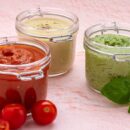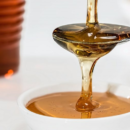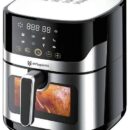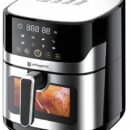Why are pairings preferred for foodies nowadays | Foodloggers
Knowing how to pair liquors with food is absolutely vital for giving your guests the best possible experience, whether you’re flinging a dinner party, running a restaurant, or simply cooking dinner for the family.
Image Credits: Pexels
What do food and wine pairings entail?
Chefs and sommeliers can pair individual dishes with different wines to further enhance the flavor of the food or beverage. Go to an alcohol store and bring the best that can pair with your dish. It is a more subjective concept than an exact science, allowing room for creativity to impress guests or customers.
Food and Drink Pairing Fundamentals
The goal is to find drinks that enhance (rather than compete with) the flavors of the food. There are several factors to take into account in order to be successful.
- Acidity and Luminance
Acidity awakens and stimulates the palate. Rich foods like chicken Alfredo, seafood like crab cakes, or spicy Chinese food pair well with acidic wines like Pinot Grigio or Sauvignon Blanc. Acidified cocktails, such as a Mojito, or non-alcoholic acidic drinks, such as lemonade, are also suitable. - Bitterness and Vanillin
Tannins occur naturally compound present in red wines like Cabernet Sauvignons, Malbecs, and Zinfandels. Tannins are liable for the pungency (but still enjoyable) flavors of these wines. Tannins complement fatty cuts of meat such as ribeye steak, roast duck, or prime rib. Tannins are also found in tea, as well as cranberry and pomegranate juices.
Image Credits: Pixabay
DID YOU KNOW?
Tannins can amplify the heat in spicy foods, so big reds aren’t usually a good match for Mexican or Thai cuisine.
- Sweetness
To balance the palate, salty and peppery dishes requires a sweeter wine. For meals like baked ham, Chiles Rellenos, or Kung Pao chicken, choose a sweet or semi-sweet wine. If you prefer something non-alcoholic, try a glass of sweet tea.
Categories for Food Pairing:
Suggestions for Food Pairing
Here is some traditional food pairing recommendations. These are, nevertheless, only suggestions. The best pairing for you is one that appeals to your individual taste.
- Pork
Most people serve the pork with a gentle red wine like Pinot Noir or a citric white wine like Riesling or Chenin Blanc. Pork must go well with beer as well. Try a robust stout or a filling German wheat beer. - Seafood and Fish
White wine is commonly served with seafood products. Chardonnay is the classical “fish wine,” while Champagne goes well with shrimp, lobster, and scallops. - Poultry
White wine is also an excellent companion to most livestock dishes (for turkey, see the last section). Choose a Riesling for a rich sauced chicken dish or a Chardonnay for roast chicken. One exception to the white wines with poultry rule is dark poultry meat, such as dark turkey meat or duck. These foods pair well with red wine.
Image Credits: Unsplash
- Lamb & Beef
Red wines are commonly cooked with red meat like beef and lamb. Savory, intricate reds, like Cabernet Sauvignon, Super Tuscan, or Malbec are ideal with steak or beef roasts. The fewer rutin you want in your wine, the leaner the cut. Beers that go well with red meat include pale and amber ales and light lagers. - Spicy Recipes
Spicy foods are incredibly tricky to sync with beverages. The diversity of flavors in Mexican, Chinese, Thai, and Middle Eastern cuisines, to mention a few, makes defining the flavor profile difficult. A light, acidic white wine, such as Riesling or Sauvignon Blanc, is a great fit for spicy foods. - Cheese
The diversity of most cheeses necessitates the use of citric wine. However, the multifaceted flavor profiles of cheeses such as bleu and aged Swiss entail a slightly different approach. In general, the more intricate the wine, the older the cheese. - Desserts
When it comes to desserts, you would like to avert anything acidic that will overpower the flavor. You wouldn’t want anything too sweet, though, because it will contend with the sweet taste of the dessert. A semi-sweet Champagne or sparkling wine is a good choice most of the time.
Image Credits: Unsplash
Restaurants can benefit from food and wine pairings
- For Entrepreneurs:
It’s just good business including food and wine combos. Pairing beverages with food menu items, according to Nightlife Restaurant, not only makes your restaurant appear more vibrant and fascinating, but it also helps drive up profits and sales. - For Clients:
Food and wine pairings will generally improve the restaurant customer’s experience. They will feel very close to the restaurant and, as a result, the atmosphere will be improved since they can trust the choice they have made. It allows them to be adventurous without fear of making bad choices.
Why?
Food and wine pairings can be used in a variety of ways on a menu. Restaurant owners may want to consider hosting a food and wine combination event in which consumers sit down for a multi-course meal. Each course would include a carefully crafted wine and food pairing designed to enhance the ambiance and please the palate. Another option is to pair each appetizer, and dessert with one or two options for a delish wine that goes well with it. Customers can then select the option that best suits their individual tastes and desires.
Perfectly Paired Categories:
- OILY & FILLING
Fish and chips, which are oily and filling, require a palate cleanser. Classic lager’s delicate caramel with bitterness cuts through the meat. Lager’s crisp, carbonated bubbles will cleanse the palate. A light-bodied white wine, such as Chablis or Chenin Blanc, cuts through fatty foods. Champagne and sparkling water wine are also excellent palate cleansers for oilier dishes.
Image Credits: Pixabay
- RICH & CREAMY
Rich, creamy dishes like carbonara necessitate drinks with moderate tannin levels to increase the drying sensation and contrast the creamy texture of the dish. Light, cool lagers pair well with creamy and rich dishes. Lager’s crisp, carbonated bubbles will cleanse the palate. The wines must be light in order to not overpower the meal, so parched aromatic whites like Chablis or Sauvignon Blanc, as well as herby Italian reds. - SWEET & SOUR
Sweet and sour dishes require drinks that balance and do not overpower sugar and salt. Look for drinks that contain ingredients similar to the food, such as ginger and raspberry. Fruit beers complement sweet and sour dishes by delivering an intense fruity flavor. Aromatic whites like Riesling and Pinot Gris pair well with sweet-and-sour dishes because the complex dish requires a simplistic wine that accommodates sugar and salt. - SMOKEY
To enhance the meal, salt and tartness must work in tandem with smoky dishes. Bitterness in red or amber ale will cut through smoky foods, whilst also sweet malty flavorings will augment any sticky BBQ sauces. Zinfandel Sauvignon is a bold and malty wine that pairs well with smoky dishes. When providing smoky BBQ dishes outdoors, consider chilling red wine to cool the entire quality. - HOT & SPICY
Hot and spicy dishes necessitate beverages to cool and balance the palate. Spice enhances the flavors of drinks, so they must be more neutral. Wheat beer pairs well with spicy and hot dishes because the creamy texture of the hops reduces through the spice and complex flavors. To complement hot spices, wine should be earthy and fruity. Because spice makes wine taste crisper, wine must be rich in fruit flavors to balance out flavors.





















